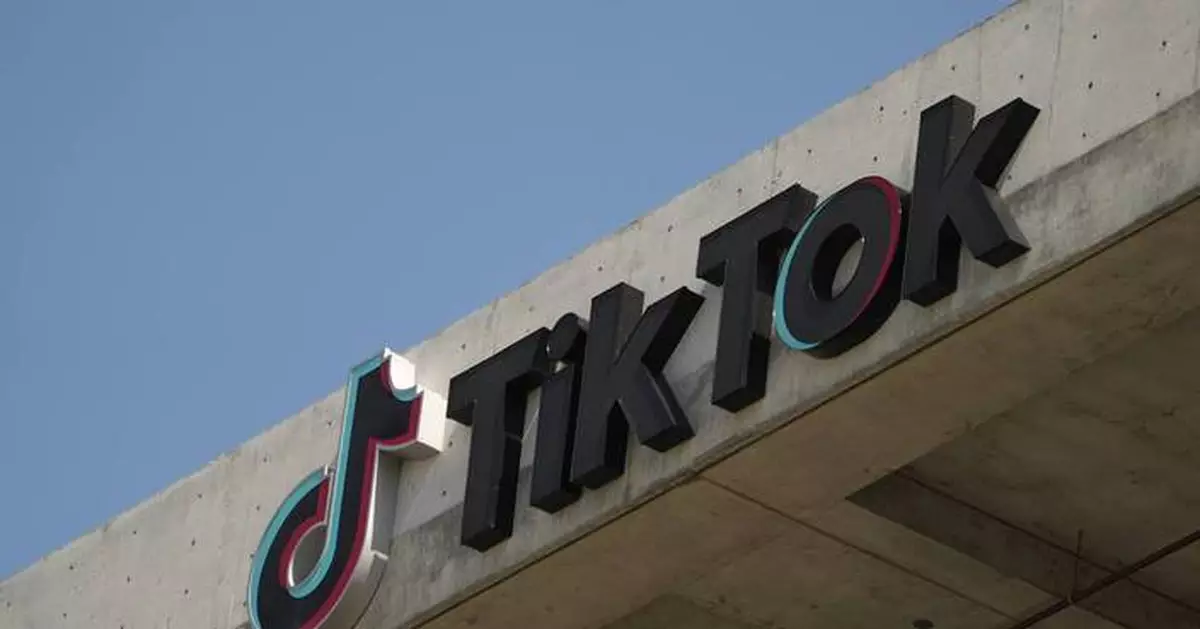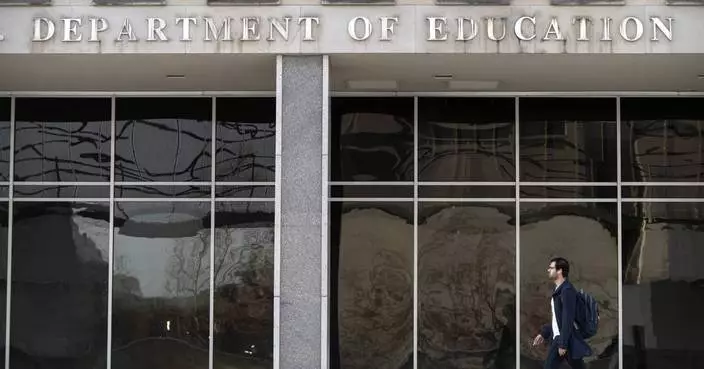More than a dozen states and the District of Columbia filed lawsuits against TikTok on Tuesday, saying that the popular short-form video app is designed to be addictive to kids and harms their mental health.
The lawsuits stem from a national investigation into TikTok, which was launched in March 2022 by a bipartisan coalition of attorneys general from many states, including New York, California, Kentucky and New Jersey. All of the complaints were filed in state courts.
Click to Gallery
California Attorney General Rob Bonta speaks during a press conference announcing a bipartisan coalition of attorney generals filing lawsuits against TikTok for violation of state consumer protection laws Tuesday, Oct. 8, 2024, in San Francisco. (AP Photo/Minh Connors)
California Attorney General Rob Bonta speaks during a press conference announcing a bipartisan coalition of attorney generals filing lawsuits against TikTok for violation of state consumer protection laws Tuesday, Oct. 8, 2024, in San Francisco. (AP Photo/Minh Connors)
California Attorney General Rob Bonta speaks during a press conference announcing a bipartisan coalition of attorney generals filing lawsuits against TikTok for violation of state consumer protection laws Tuesday, Oct. 8, 2024, in San Francisco. (AP Photo/Minh Connors)
California Attorney General Rob Bonta speaks during a press conference announcing a bipartisan coalition of attorney generals filing lawsuits against TikTok for violation of state consumer protection laws Tuesday, Oct. 8, 2024, in San Francisco. (AP Photo/Minh Connors)
FILE - The TikTok logo is seen on their building in Culver City, Calif., March 11, 2024. (AP Photo/Damian Dovarganes, File)
At the heart of each lawsuit is the TikTok algorithm, which powers what users see on the platform by populating the app’s main “For You” feed with content tailored to people’s interests. The lawsuits note TikTok design features that they say addict children to the platform, such as the ability to scroll endlessly through content, push notifications that come with built-in “buzzes” and face filters that create unattainable appearances for users.
“They’ve chosen profit over the health and safety, well-being and future of our children," California Attorney General Rob Bonta said at a news conference in San Francisco. "And that is not something we can accept. So we’ve sued.”
The latest lawsuits come nearly a year after dozens of states sued Instagram parent Meta Platforms Inc. in state and federal courts for harming young people and contributing to the youth mental health crisis by knowingly and deliberately designing addictive features that keep kids hooked on their platforms.
Keeping people on the platform is “how they generate massive ad revenue,” District of Columbia Attorney General Brian Schwalb said in an interview. “But unfortunately, that’s also how they generate adverse mental health impacts on the users.”
The legal challenges, which also include Google's YouTube, are part of a growing reckoning against social media companies and their effects on young people's lives. In some cases, the challenges have been coordinated in a way that resembles how states previously organized against the tobacco and pharmaceutical industries.
TikTok, though, is facing an even bigger obstacle, as its very existence in the U.S. is in question. Under a federal law that took effect earlier this year, TikTok could be banned from the U.S. by mid-January if its China-based parent company, ByteDance, doesn’t sell the platform by then. Both TikTok and ByteDance are challenging the law at an appeals court in Washington. A panel of three judges heard oral arguments in the case last month and are expected to issue a ruling, which could be appealed to the U.S. Supreme Court.
In its filings Tuesday, the District of Columbia called the algorithm “dopamine-inducing,” and said it was created to be intentionally addictive so the company could trap many young users into excessive use and keep them on its app for hours on end. TikTok does this despite knowing that these behaviors will lead to profound psychological and physiological harms, such as anxiety, depression, body dysmorphia and other long-lasting problems, the district said.
TikTok is disappointed that the lawsuits were filed after the company had been working with the attorneys general for two years on addressing to the issues, a spokesman said.
“We strongly disagree with these claims, many of which we believe to be inaccurate and misleading," the TikTok spokesman. Alex Haurek, said. "We’re proud of and remain deeply committed to the work we’ve done to protect teens and we will continue to update and improve our product.”
The social media company does not allow children under 13 to sign up for its main service and restricts some content for everyone under 18. But Washington and several other states said in their filings that children can easily bypass those restrictions, allowing them to access the service adults use despite the company's claims that its platform is safe for children.
The District of Columbia alleges TikTok is operating as an “unlicensed virtual economy" by allowing people to purchase TikTok Coins – a virtual currency within the platform – and send “Gifts” to streamers on TikTok LIVE who can cash it out for real money. TikTok takes a 50% commission on these financial transactions but hasn’t registered as a money transmitter with the U.S. Treasury Department or authorities in the district, according to the complaint.
Officials say teens are frequently exploited for sexually explicit content through TikTok’s LIVE streaming feature, which has allowed the app to operate essentially as a “virtual strip club" without any age restrictions. They say the cut the company gets from the financial transactions allows it to profit from exploitation.
The 14 attorneys general say the goal of their lawsuits is to stop TikTok from using these features, impose financial penalties for their alleged illegal practices and collect damages for users that have been harmed.
The use of social media among teens is nearly universal in the U.S. and many other parts of the world. Almost all teens ages 13 to 17 in the U.S. report using a social media platform, with about a third saying they use social media “almost constantly,” according to the Pew Research Center.
High school students who frequently use social media more commonly have persistent feelings of sadness or hopelessness, according to a new survey from the Centers for Disease Control and Prevention conducted last year in which about 20,000 teenagers participated.
Last week, Texas Attorney General Ken Paxton sued TikTok, alleging the company was sharing and selling minors' personal information in violation of a new state law that prohibits these practices. TikTok, which disputes the allegations, is also fighting against a similar data-oriented federal lawsuit filed in August by the Department of Justice.
Several Republican-led states, including Nebraska, Kansas, New Hampshire, Kansas, Iowa and Arkansas, also previously sued the company, some unsuccessfully, over allegations it is harming children's mental health, exposing them to “inappropriate” content or allowing young people to be sexually exploited on its platform.
Associated Press writers from around the U.S. contributed to this story.
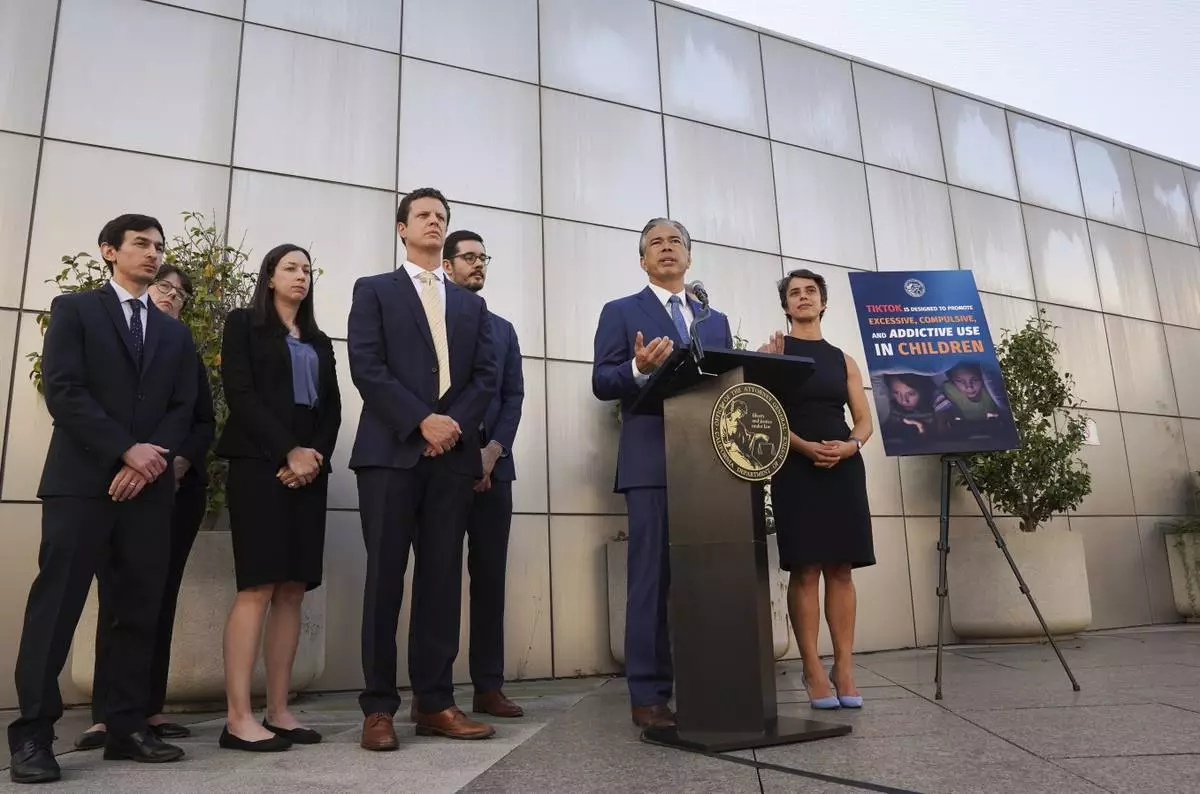
California Attorney General Rob Bonta speaks during a press conference announcing a bipartisan coalition of attorney generals filing lawsuits against TikTok for violation of state consumer protection laws Tuesday, Oct. 8, 2024, in San Francisco. (AP Photo/Minh Connors)
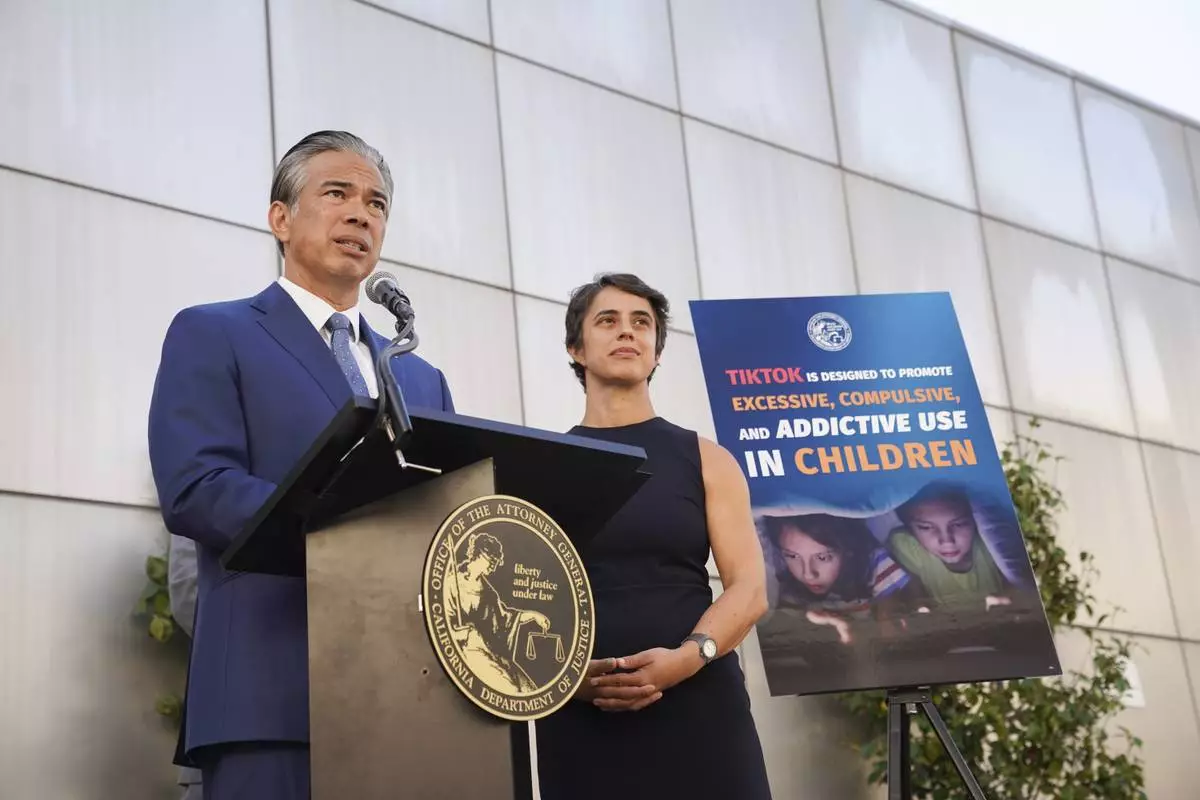
California Attorney General Rob Bonta speaks during a press conference announcing a bipartisan coalition of attorney generals filing lawsuits against TikTok for violation of state consumer protection laws Tuesday, Oct. 8, 2024, in San Francisco. (AP Photo/Minh Connors)

California Attorney General Rob Bonta speaks during a press conference announcing a bipartisan coalition of attorney generals filing lawsuits against TikTok for violation of state consumer protection laws Tuesday, Oct. 8, 2024, in San Francisco. (AP Photo/Minh Connors)
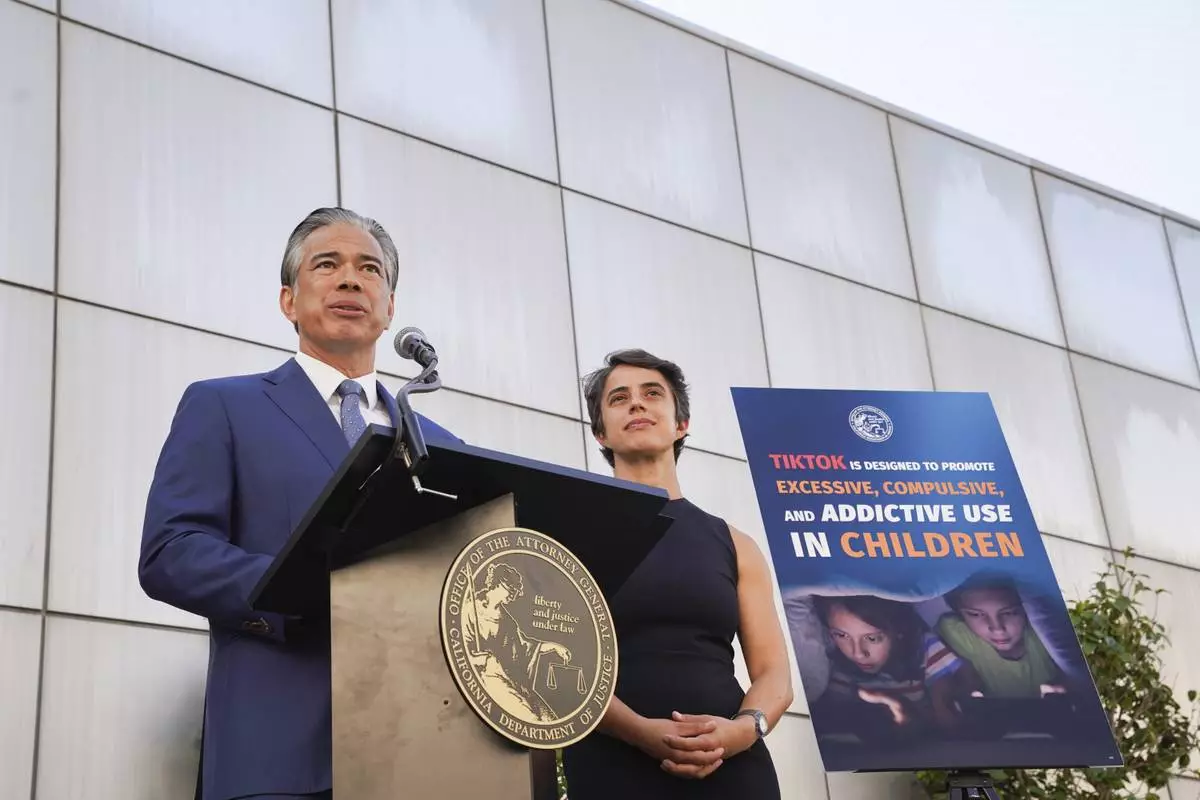
California Attorney General Rob Bonta speaks during a press conference announcing a bipartisan coalition of attorney generals filing lawsuits against TikTok for violation of state consumer protection laws Tuesday, Oct. 8, 2024, in San Francisco. (AP Photo/Minh Connors)
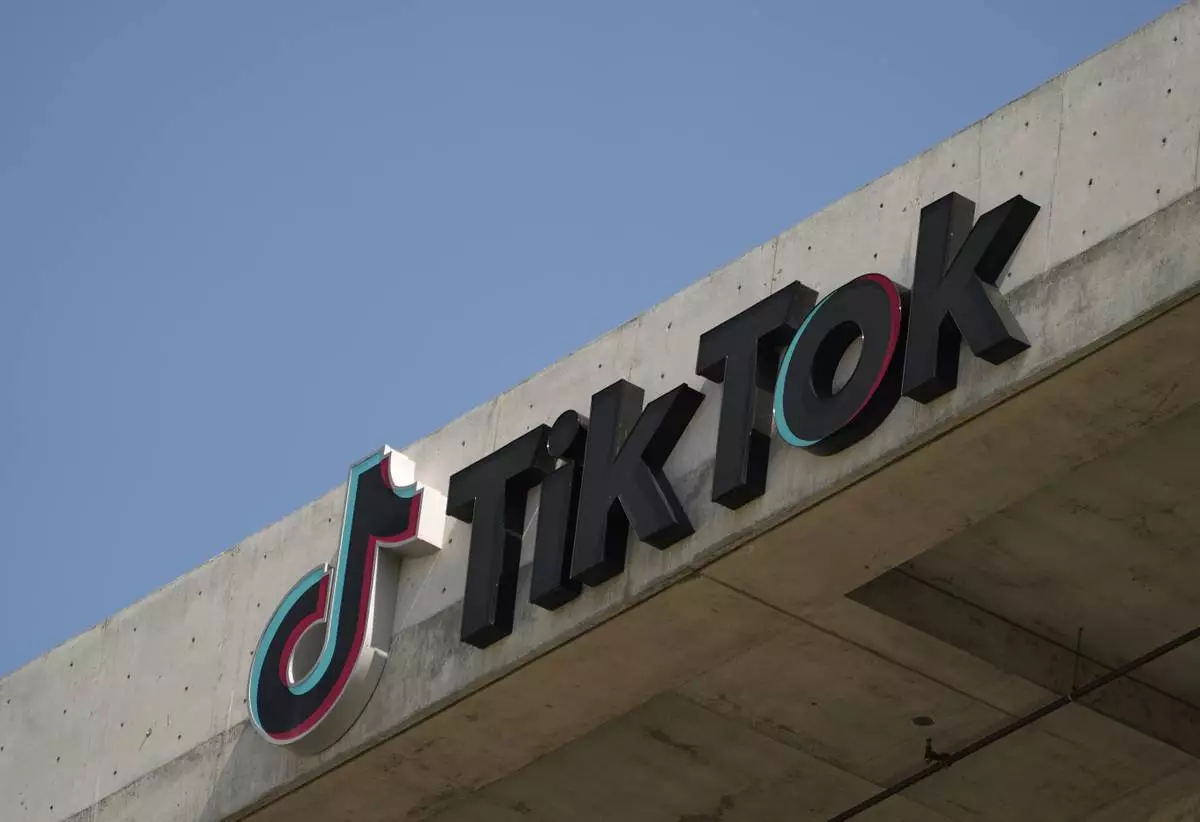
FILE - The TikTok logo is seen on their building in Culver City, Calif., March 11, 2024. (AP Photo/Damian Dovarganes, File)
PANAMA CITY (AP) — They crossed oceans to get to the U.S., fleeing conflict, religious persecution, poverty and government crackdowns in countries such as Afghanistan, Somalia, Cameroon, China, Pakistan and Iran.
After flying to Central and South America, they bused through countries where they didn’t speak the language and walked through unfamiliar jungle to get to the U.S.-Mexico border.
Within days, they were detained and put on military aircraft that flew nearly 300 of them to Panama as U.S. President Donald Trump sought to accelerate deportations to more complicated destinations.
Panama was supposed to be a stopover. But for those unwilling to return home — mostly out of well-founded fear — Panama sent them to a guarded camp without access to lawyers in the same Darién jungle many had crossed months earlier on their way north.
Over the past week, under legal pressure, the Panamanian government dropped them off at a bus station in the capital with 30 days to figure out where they will go next.
“It feels like the whole world is crushing down on me. It’s like everything is stopping,” said Isha Len, a 29-year-old from Cameroon. “I risked everything, my life, everything, crossing the Darién Gap, just to be sent back.”
Here are the stories that some of the deportees told The Associated Press:
After conflict broke out in her small town, Len crossed Cameroon by car and minibus, then a fisherman friend carried her four hours by boat to Nigeria.
Len, a schoolteacher, flew to Sao Paulo, Brazil, where she said authorities detained her for a month in the airport. From there, she wound north through South America by bus, following other migrants until they reached the Darién Gap.
She walked days through the dangerous jungle that divides Colombia and Panama before boarding buses that carried her through Central America. After being kidnapped for days by a gang in Guatemala, she crossed into southern Mexico, where she took a boat along the Pacific coast to evade authorities. After she landed, she rode eight hours to Mexico City, continuing on by bus and car to Tijuana.
She crossed the U.S. border and presented herself to American authorities.
Artemis Ghasemzadeh left her country in January, fleeing after converting from Islam to Christianity – something that could cost Ghasemzadeh her life in Iran. She flew to Dubai, where she stayed two weeks and then took a flight to South Korea.
From there she flew to Mexico City, staying there for three weeks before going to Tijuana. She crossed the U.S. border on Feb. 9, and was detained for five days, including her birthday.
“For changing your religion, your punishment is death," she said. “We don’t know what will happen."
Wang Qiu said he left home after he was imprisoned for three years for speaking out about democracy and human rights issues.
He flew from Beijing to Cuba, then to the small South American country of Suriname. From there, he traveled by land: through Guyana, Brazil, Bolivia, Peru, Ecuador and Colombia, before trekking through the Darién Gap.
He moved up through Central America and Mexico before being detained after crossing into the U.S. in San Diego.
Qamar Abdi, left for the U.S. on Aug. 17, due to warfare between the government and militants of al-Shabab, which the U.S. recognizes as a terrorist group.
She hopped from buses to shared cars for nearly a month until she reached South Africa. From there, she flew to Sao Paulo, Brazil, and spent the next six months riding buses north.
When she arrived at the northern tip of Colombia, she traveled six days through the Darién Gap, landing in Panama on New Year's Day.
She took buses to the southern Mexican border city of Tapachula, where she was temporarily kidnapped and robbed by a gang. To avoid immigration authorities, she traveled hours packed on a boat with other migrants along Mexico's Pacific coast, then took a bus to Mexico City. She spent two weeks there before driving to Tijuana, where she crossed into the U.S.
Ebrahim Ghezelgechi fled Iran with his wife, Sahar; 10-year-old daughter, Aylin; and 11-year-old son, Sam, on Nov. 21.
The family flew to Brazil, then to Panama and finally Nicaragua. From there, they took buses north to Guatemala, then crossed into southern Mexico by boat. They rode on top of trains and in buses and vans to get to Tijuana.
After Mexico authorities sent them back to the southern part of the country, they took a plane to the resort area of Los Cabos. There, they were detained, had their passports taken and were sent back south again.
They tried getting north a number of times, punted back by Mexican authorities, before eventually paying a driver to take them to Tijuana.
After crossing into the U.S., they were detained in San Diego for a week.
Samin Haider left for Dubai in 2023 after violence surged in his region of Parachinar, which borders Afghanistan and has been plagued for decades by conflicts between Shi’ite and Sunni Muslim communities.
Haider was there for 1 1/2 years before the United Arab Emirates canceled visas for Pakistanis.
Haider then flew to Mexico and traveled to the U.S.-Mexico border with the hopes of seeking asylum.
Now deported to Panama, he still hopes to reach the U.S.
Elham Ghaedi left on Oct. 21, flying to Brazil and then to Venezuela's capital Caracas.
She traveled to Colombia, where took a bus north and then walked five days through the Darién Gap.
She stayed 15 days in a migrant camp in southern Panama before taking a bus through Costa Rica, Nicaragua, Honduras, Guatemala and to Mexico's southern border. There, migration authorities detained her for six days.
She traveled north to Mexico City, where she spent a month, before boarding a flight to Tijuana. U.S. authorities detained her when she crossed to San Diego.
Omagh fled Afghanistan in 2022 after the takeover of the Taliban because he identified as an atheist and was part of an ethnic minority, something that could put his life in danger.
He first went to Pakistan, where he got a visa for six months, and struggled to get a new one due to his Afghani passport.
He then went to Iran and worked there for 1 1/2 years. But the country wouldn’t accept him as a refugee.
He managed to get a visa to Brazil, which offered a number of Afghan people refuge after the rise of the Taliban, and flew to Sao Paulo in 2024.
Hoping to reunite with friends and family in the U.S., Omagh paid smugglers to move him north through Bolivia, Peru, Ecuador and Colombia. He trekked through the Darién Gap, then took buses north through Central America to southern Mexico.
Mexican authorities detained him and dropped him back in southern Mexico a few times before he managed to take a flight to Mexico City and later to the U.S., where he was detained.
“After so much time, I’ve lost hope,” he said.

Afghan migrant Hayatullah Omagh poses for a portrait in Panama City, Monday, March 10, 2025, after being deported from the United States, detained for weeks in a Panamanian immigration camp and released on a temporary humanitarian visa allowing a 30‑day stay. (AP Photo/Matias Delacroix)
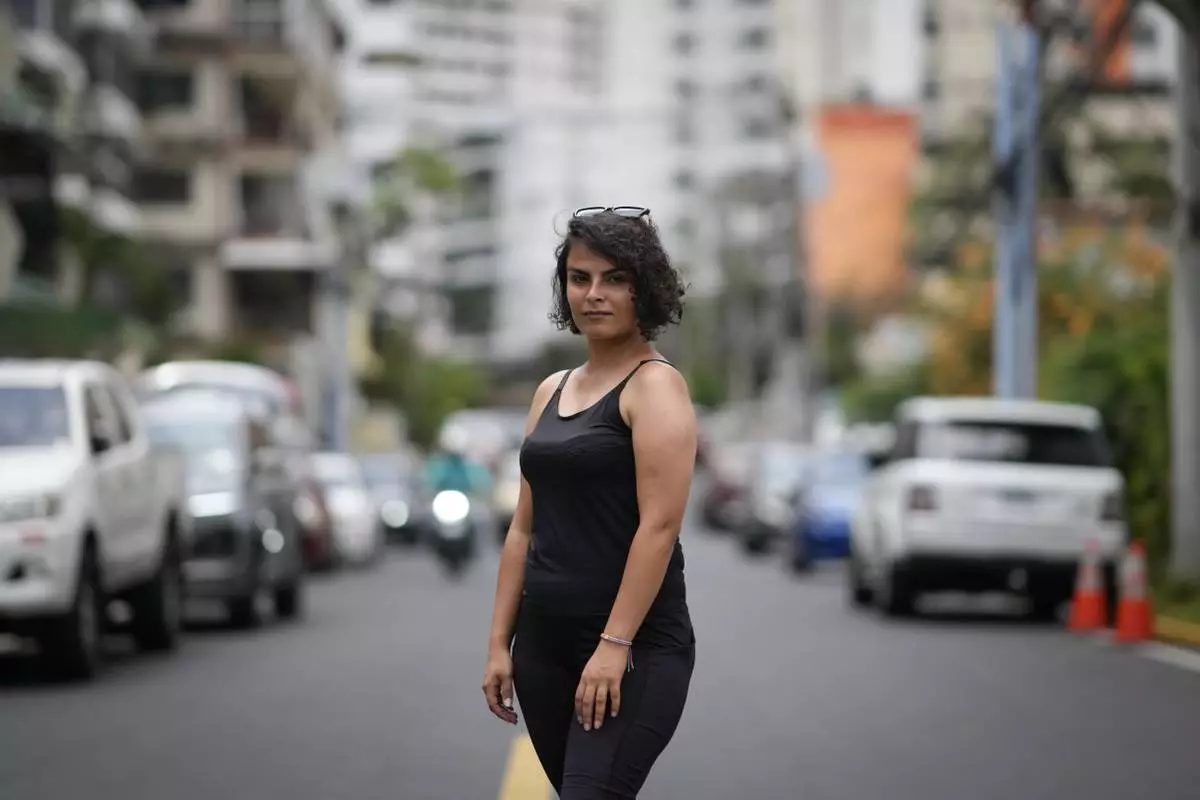
Elham Ghaedi, a migrant from Iran, poses for a portrait in Panama City, Monday, March 10, 2025, after being deported from the United States, detained for weeks in a Panamanian immigration camp, and released on a temporary humanitarian visa allowing a 30‑day stay. (AP Photo/Matias Delacroix)

Samin Haider, left, a migrant from Pakistan, and his cousin Saqlain Sayed, pose for a portrait in Panama City, Monday, March 10, 2025, after being deported from the United States, detained for weeks in a Panamanian immigration camp, and released on a temporary humanitarian visa allowing a 30‑day stay. (AP Photo/Matias Delacroix)

Ebrahim Ghezelgechi, right, a migrant from Iran, poses for a portrait with his wife Sahar Bideman and their children Sam and Aylin in Panama City, Monday, March 10, 2025, after they were deported from the U.S., detained for weeks in a Panamanian immigration camp, and released on a temporary humanitarian visa allowing a 30‑day stay. (AP Photo/Matias Delacroix)
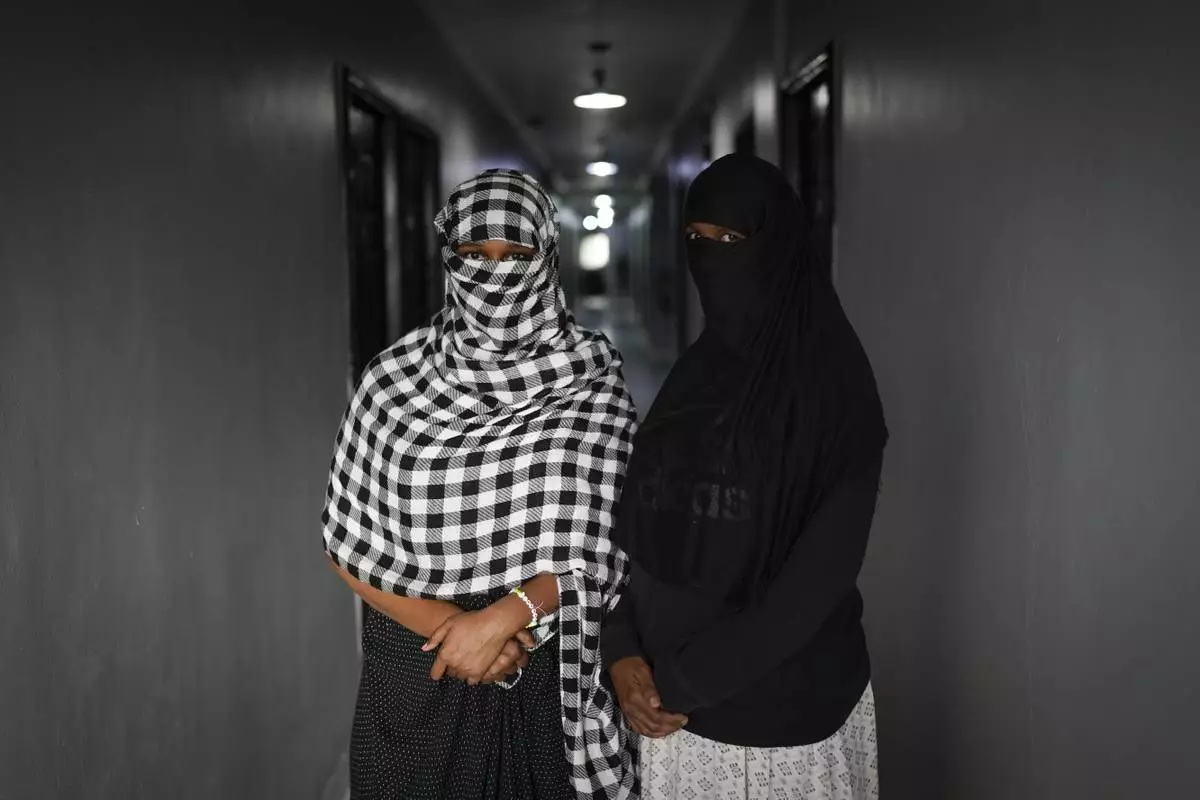
Qamar Abdi and Filsan Aliin, migrants from Somalia, pose for a portrait at the hotel where they are staying in Panama City, Monday, March 10, 2025, after being deported from the United States, detained for weeks in a Panamanian immigration camp, and released on a temporary humanitarian visa allowing a 30‑day stay. (AP Photo/Matias Delacroix)

Wang Qiu, a migrant from China, poses for a portrait in Panama City, Tuesday, March 11, 2025, after being deported from the United States, detained for weeks in a Panamanian immigration camp, and released on a temporary humanitarian visa allowing a 30‑day stay. (AP Photo/Matias Delacroix)

Artemis Ghasemzadeh, a migrant from Iran, poses for a portrait in Panama City, Monday, March 10, 2025, after being deported from the United States, detained for weeks in a Panamanian immigration camp, and released on a temporary humanitarian visa allowing a 30‑day stay. (AP Photo/Matias Delacroix)
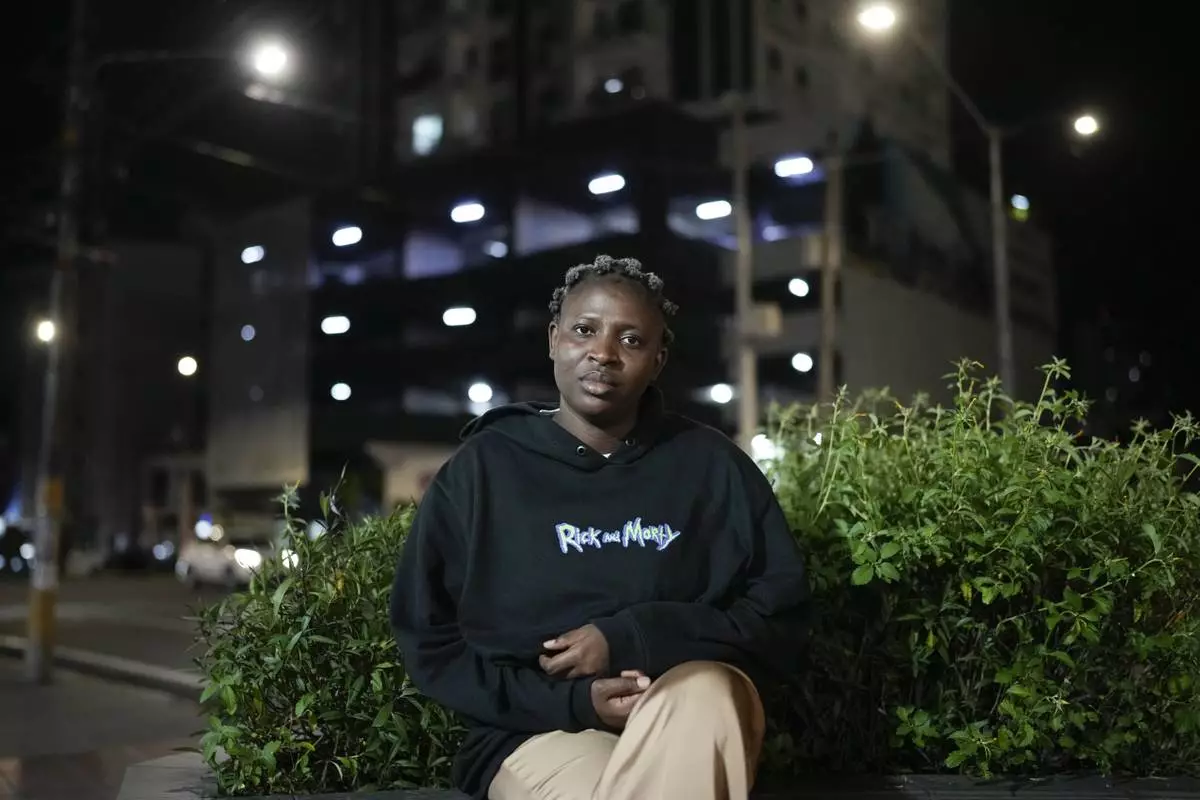
Isha Len, a migrant of Cameroon, poses for a photo in Panama City, Monday, March 10, 2025, after being deported from the U.S., detained for weeks in a Panamanian immigration camp, and released on a temporary humanitarian visa allowing a 30‑day stay. (AP Photo/Matias Delacroix)

Migrants who were held in a Panamanian immigration shelter after being deported from the U.S. embraced upon arriving in Panama City on Saturday, March 8, 2025, after authorities gave them 30 days to leave the country. (AP Photo/Matias Delacroix)







